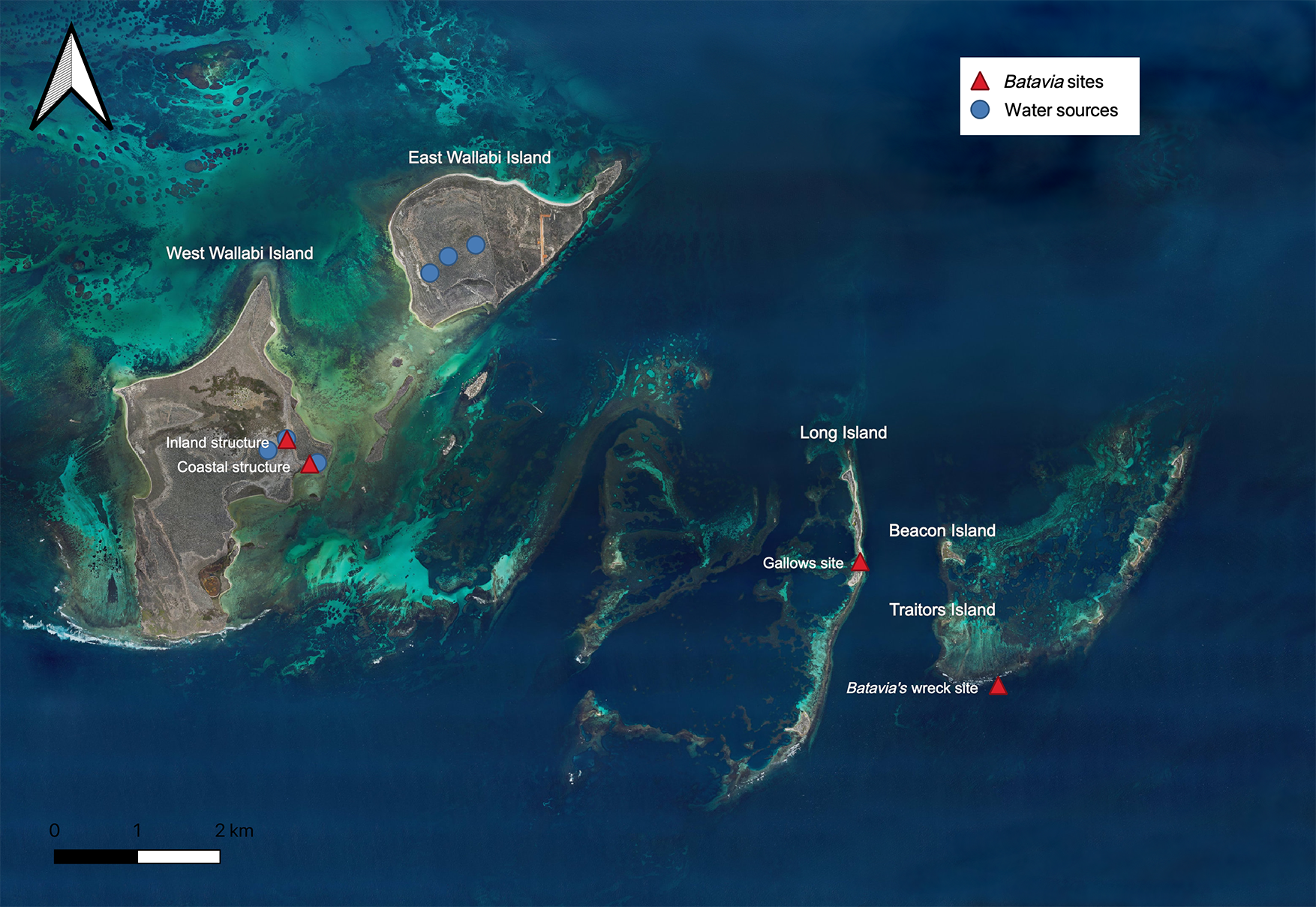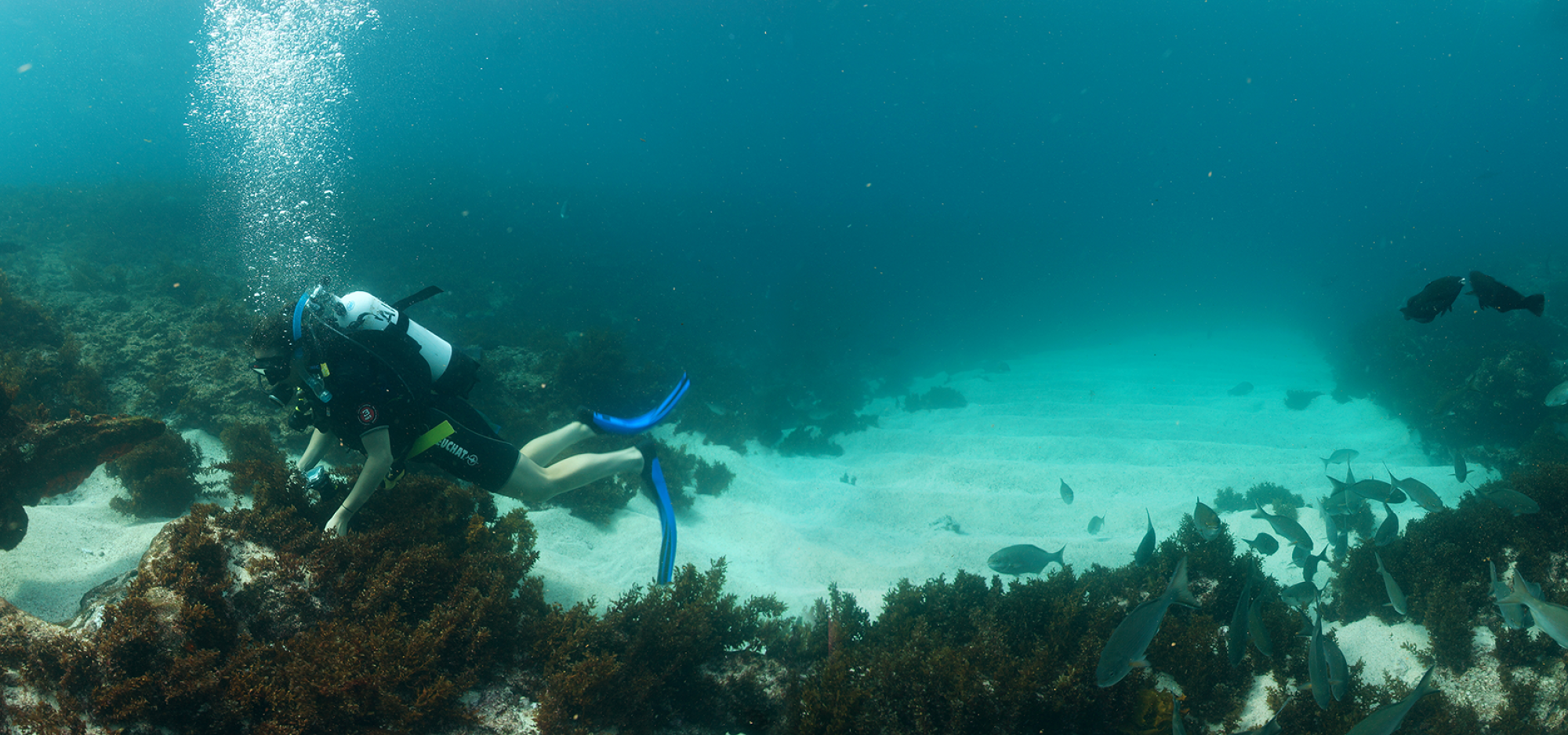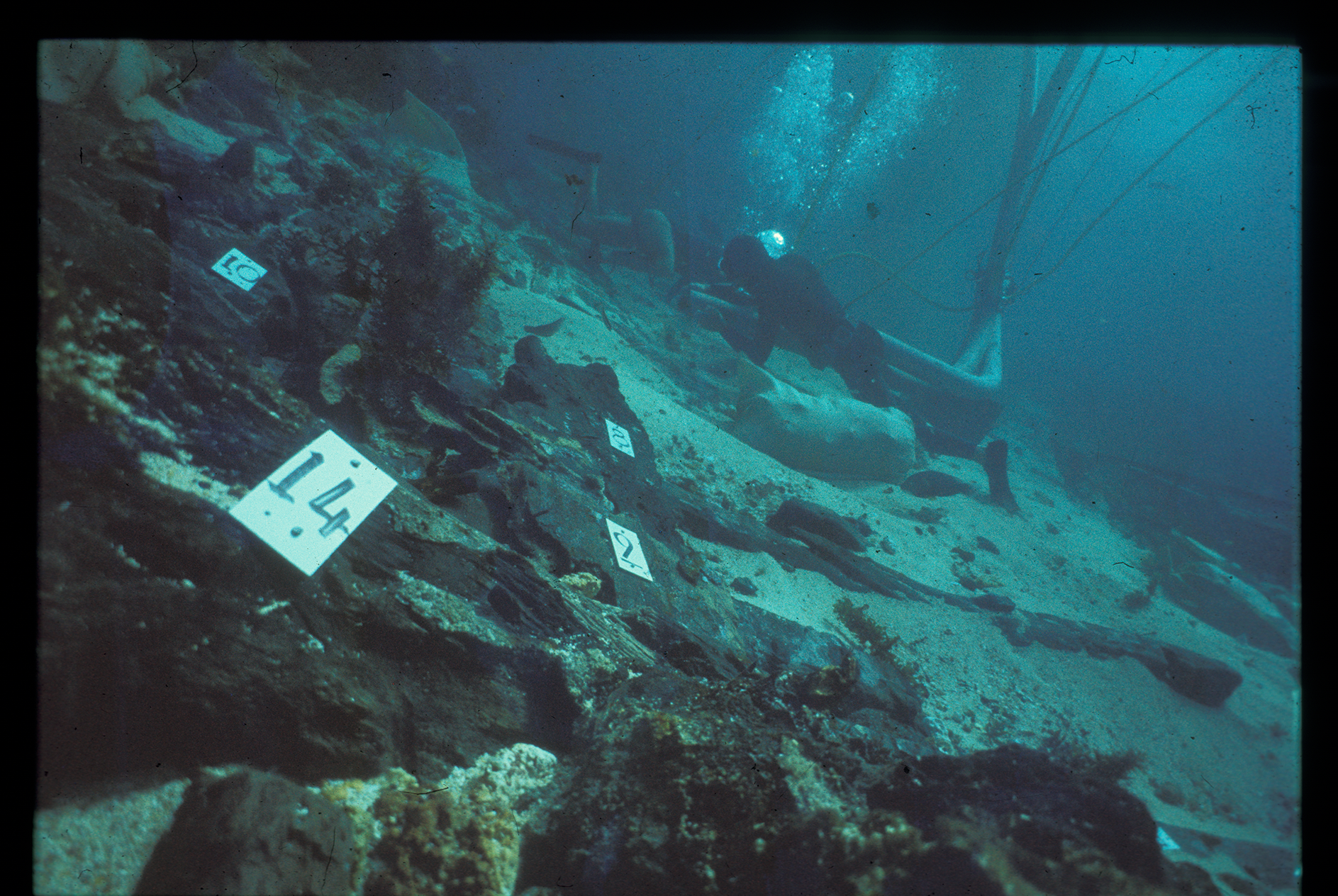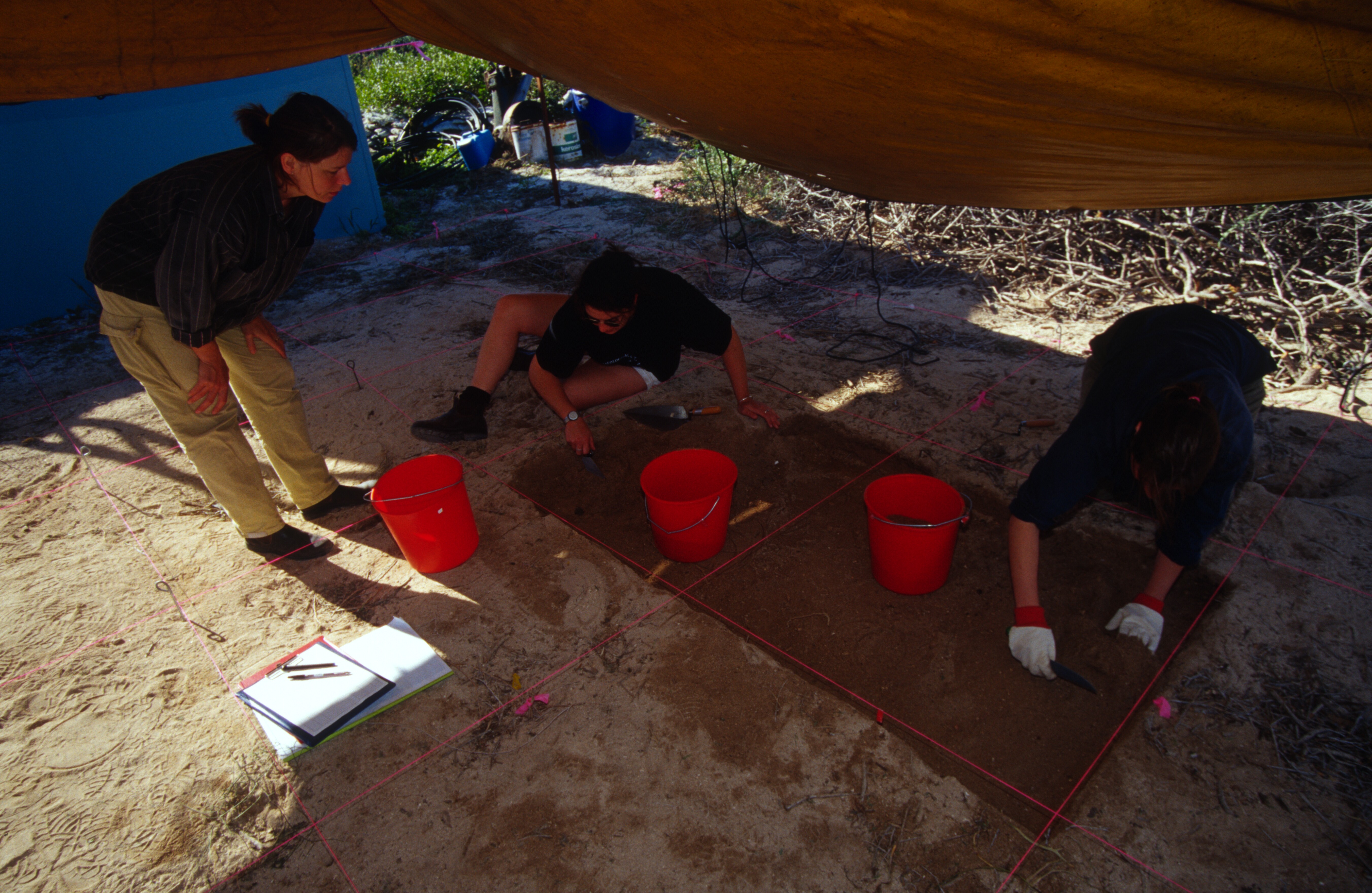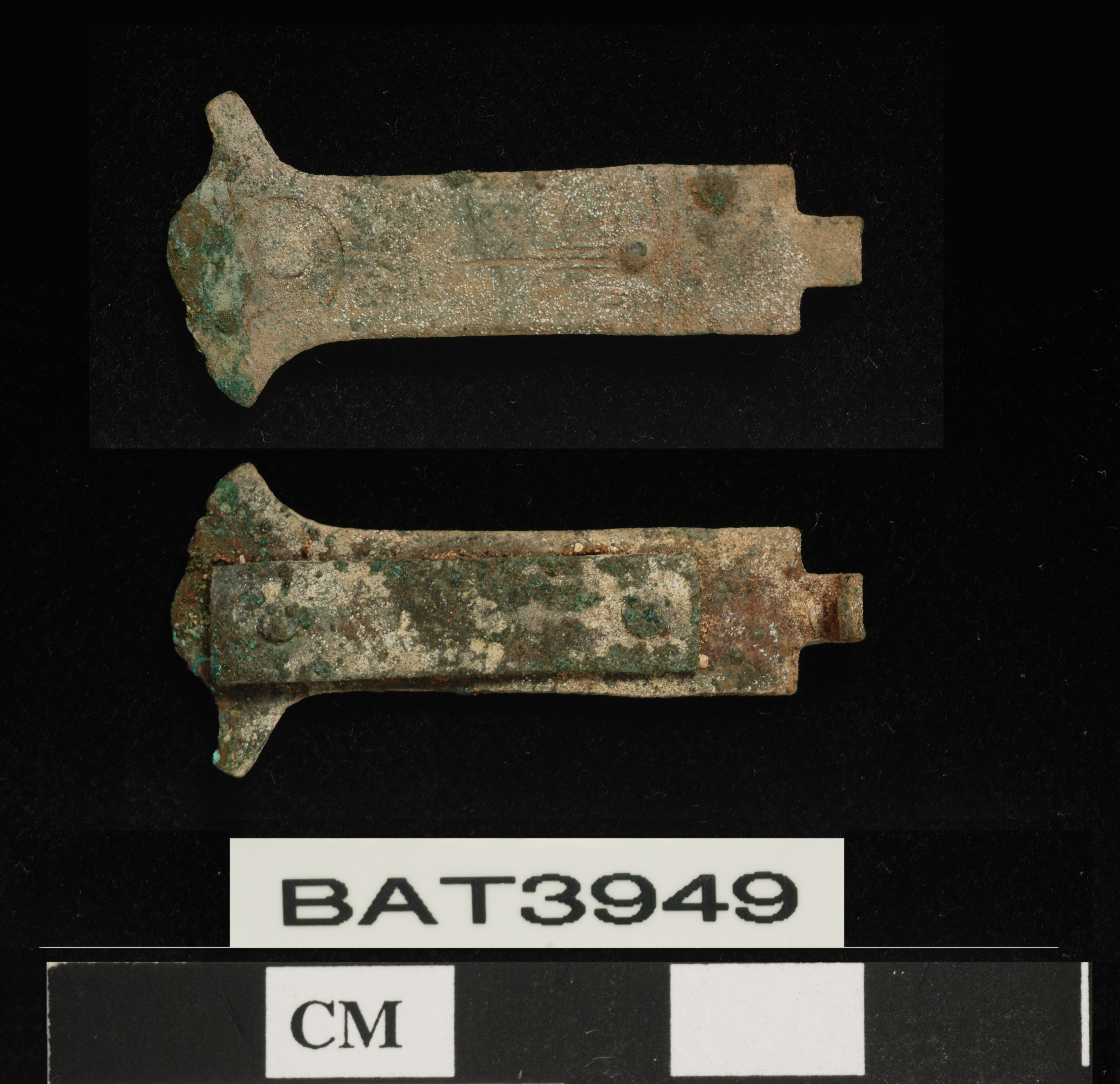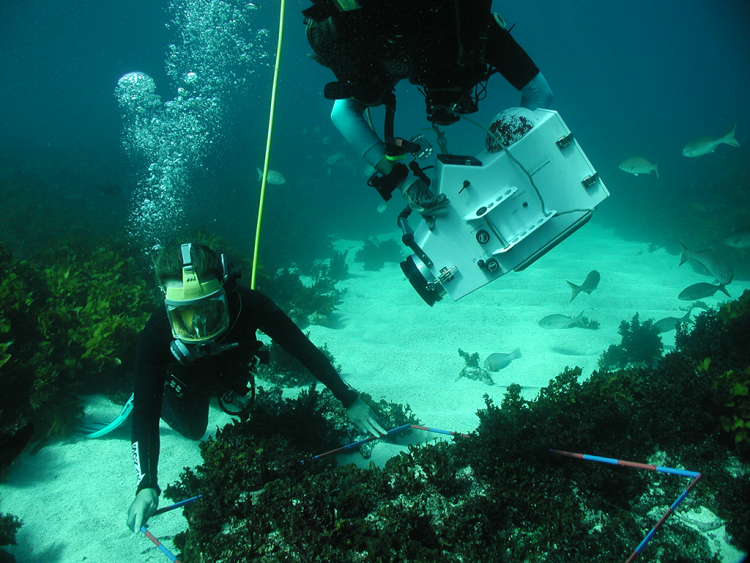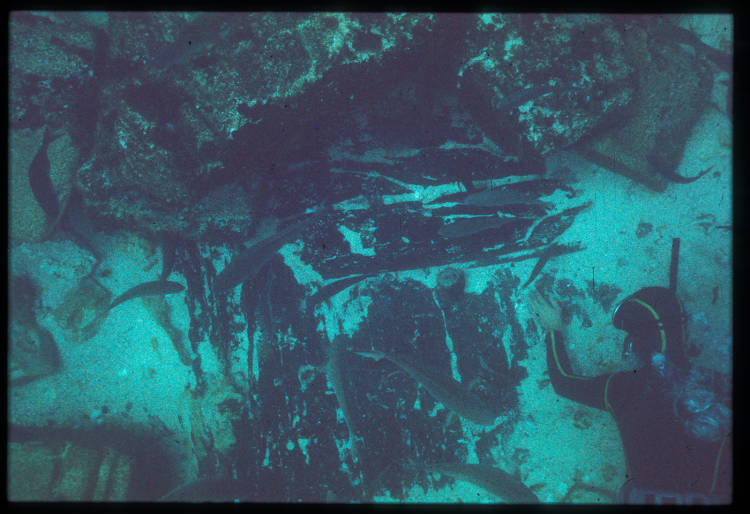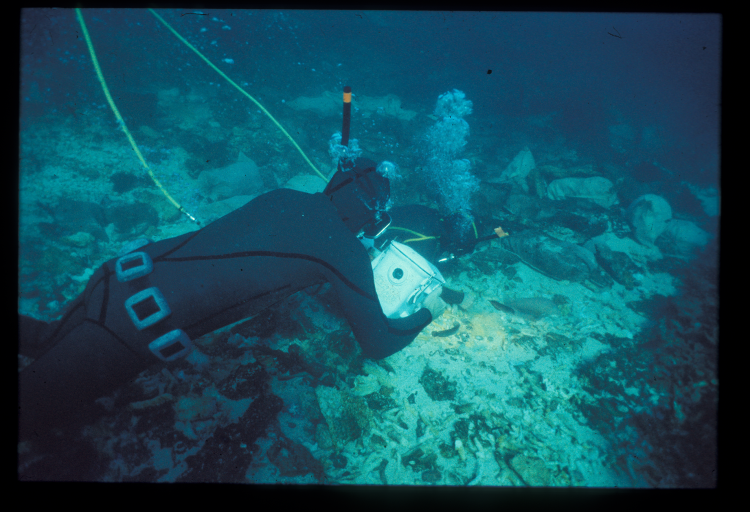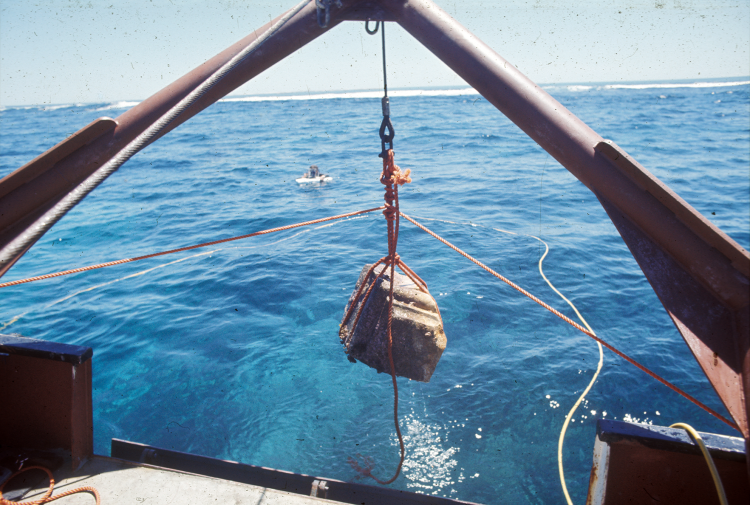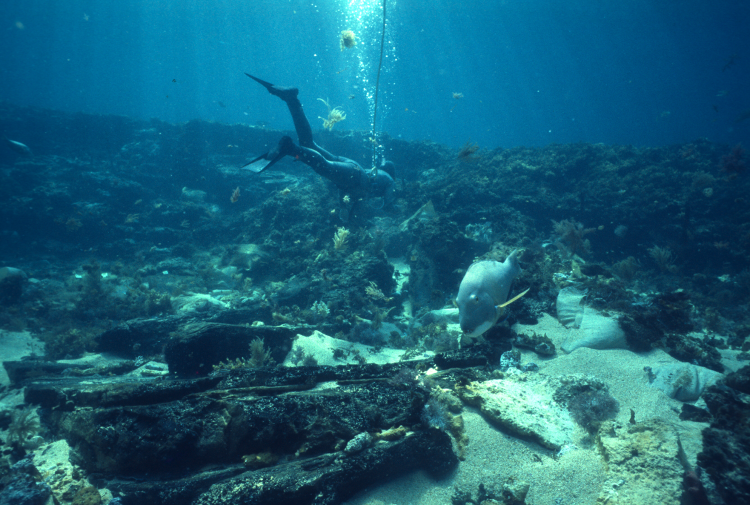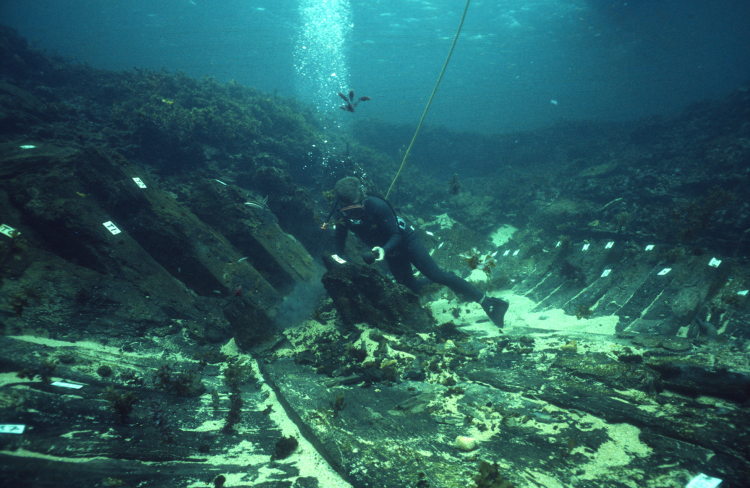Professor Alistair Paterson discussing excavation on Beacon Island as part of the Shipwrecks of the Roaring Forties Project (ARC Linkage LP130100137).
Credit: University of Western Australia | WA Museum
The WA Museum was a Partner Organisation in the University of Western Australia-led Australian Research Council Linkage Project: LP130100137: Shipwrecks of the Roaring Forties: a maritime archaeological reassessment of some of Australia’s earliest shipwrecks. The research team conducted five expeditions to the Wallabi Group to apply new methods and technologies to Batavia’s terrestrial sites and collections (held by the WA Museum).
With the removal of the buildings from Beacon Island in 2014, remote sensing and geophysical surveys were able to be conducted on previously inaccessible areas of the island. The subsequent excavations uncovered large amounts of personal objects, such as amber beads, clothing hook and eye clasps, buttons and a comb. Twelve additional individual skeletons were also excavated. New forensic techniques, such as isotopic analysis, were applied to all human bones and teeth recovered from Beacon Island between 1963 and 2018. The results revealed new information about people’s diets and countries of origin.
An excavation was carried out on Long Island at the site found in 2007. The findings reinforced the theory that this was the site of the gallows erected to execute Cornelisz and six other mutineers. All excavation sites and the structures on West Wallabi Island were recorded as 3D photogrammetric models and position-fixed using Differential Geographic Positioning System (DGPS).
